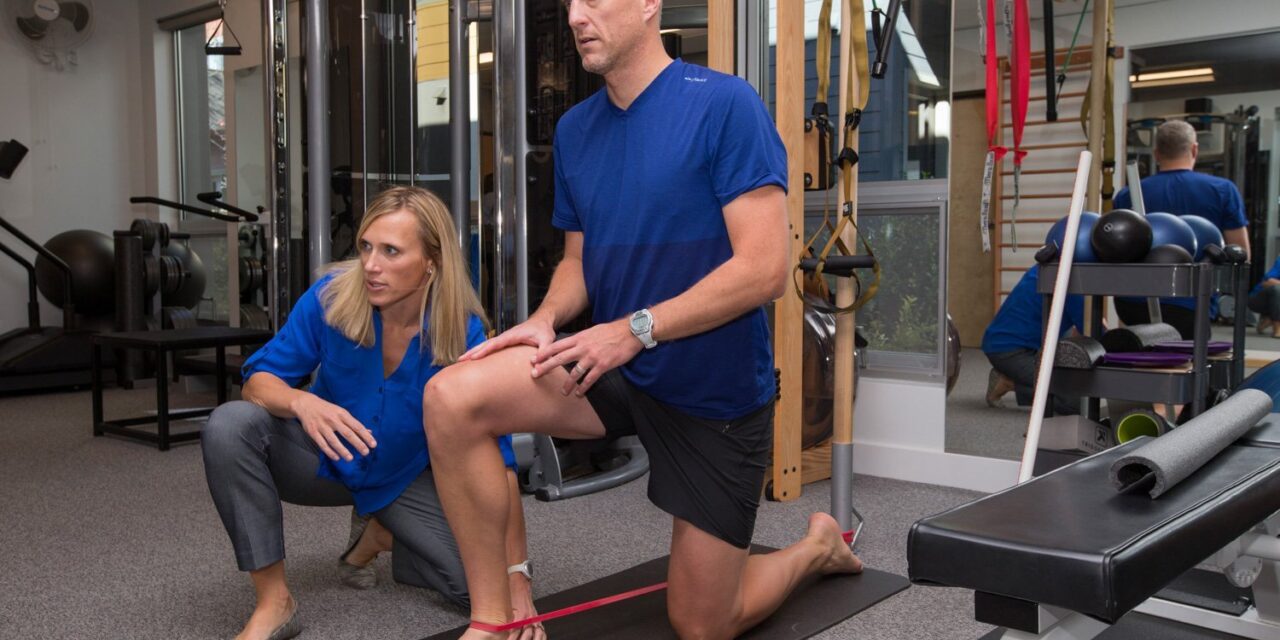A number of studies have shown a relationship between ankle mobility and lower quarter injuries. In our Boulder and Lafayette Physical Therapy clinics we often identify these impairments during our Physical Therapy examination. A loss of mobility in one area of the body can lead to overuse of an adjacent area. Examples include a loss...
Improving Knee Pain In Jumping Athletes
November 11, 2022
The knee is subjected to the biomechanics of the adjacent hip and ankle due to its’ location between two long bones lower extremity. These long levers can contribute significantly to a patient’s knee symptoms. In our Boulder Physical Therapy and Lafayette Physical Therapy offices we commonly evaluate and treat the adjacent joints in the lower...
Ankle stiffness or lack of mobility is common impairment in many patients with lower quarter symptoms including ankle, knee, and hip pain. Limitations at this important joint create compensations up the body, most commonly at the knee, and create dynamic alignment impairments within the lower body. These biomechanical changes may present during walking, stair climbing,...
Ankle mobility, in particular dorsiflexion, is an essential mobility need for athletics and every day activities including stair climbing and squatting. Interestingly, authors have shown side to side asymmetries of 6 degrees, > 20% were greater than 10 degrees, are common between legs in both healthy and injured populations Prior research has demonstrated altered dynamic...
Lower extremity stiffness (“leg stiffness”) describes the resistance the joints and muscles in your lower body will have to movement when your foot contacts the ground during running. Think of your leg as a spring; the more tightly coiled spring will be stiffer, the more loosely coiled will be more deformable. A stiffer leg is...
The ankle plays a critical role in the ability of the knee to stay over the foot during functional tasks such as walking, running, and stair climbing. Under normal conditions the mobility of the ankle allows the leg to move forward over the weight bearing foot. If this range of motion is limited, the leg...
The role of ankle mobility on injury risk and performance has been previously described in our prior blog posts. These posts have described the correlation between a lack of mobility at the ankle and knee injuries including patellofemoral knee pain and ACL injury, as well as, ankle sprains and achilles tendonitis. A lack of ankle...
In a previous post, we detailed the latest research on the importance of ankle mobility on knee mechanics. During weight bearing the shin, tibia, must be able to move forward over the fixed ankle and foot. Without adequate ankle flexibility and shin moved over the foot to the inside placing the knee at risk of...
The achilles tendon is a strong, durable structure capable of absorbing and producing large loads as we walk, hike, and run. When the tendon is overloaded without adequate recovery periods this structure is prone to painful and limiting conditions such as achilles tendonitis and tendinopathy. One of the important risk factors for achilles injury among...
Influence of Ankle Mobility on Knee Stability and Control
January 6, 2016
The step down test is an important Physical Therapy test to determine the ability of our athletes to stabilize their lower extremity in single leg stance. Proper performance of this test requires adequate strength, balance, control, and mobility in the lower extremity. Often athletes with lower extremity or spinal pain have a significant asymmetry in...


